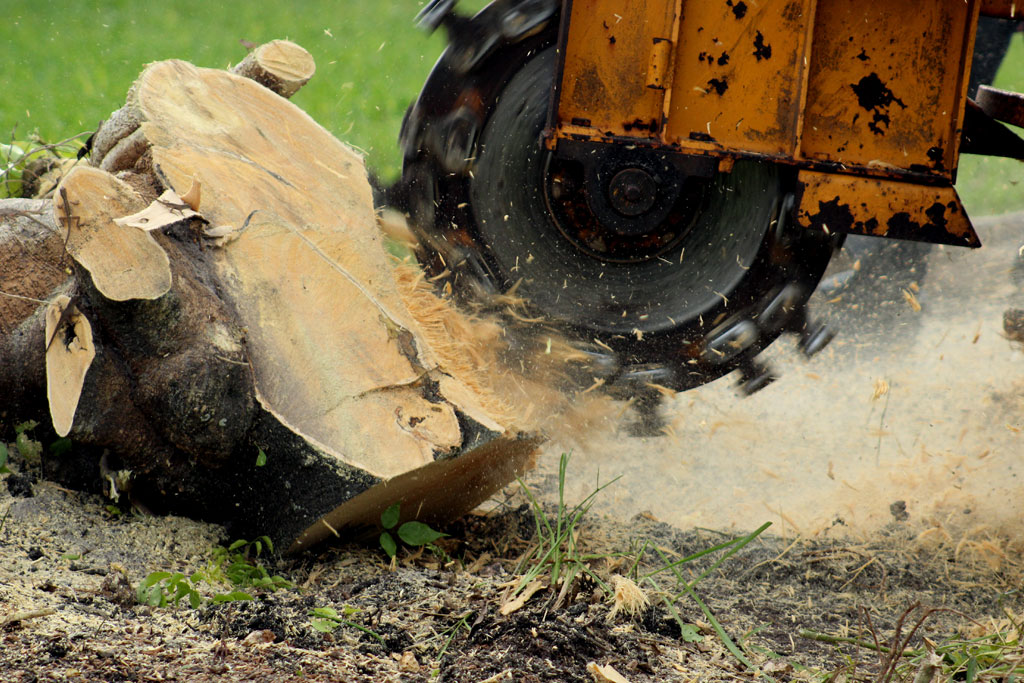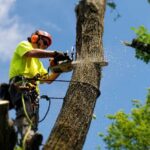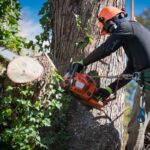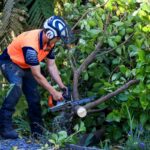What Is the Role of Tree Stump Removal in Urban Forest Management?
Tree stump removal plays a vital role in managing urban forests, directly supporting cities’ efforts to maintain healthy green spaces. Urban forest management involves planning, planting, maintaining, and removing trees within city limits to maximise benefits for residents.
Why Are Stumps Important?
Stumps are the remains of urban trees that once played a part in the local ecosystem. If left alone, these stumps can become homes for pests, diseases, and fungi that pose a threat to nearby trees and the overall health of the urban forest. Additionally, decomposing stumps take up space where new trees could be planted but offer little environmental benefit compared to living trees.
The Importance of Removing Stumps
Tree stump removal is crucial for keeping cities’ tree canopies healthy and expanding. Each stump that gets removed presents an opportunity to plant a new tree, which aligns with many councils’ climate action plans that aim to increase canopy coverage. This process of tree stump removal and planting new trees ensures ongoing growth rather than stagnation.
Safety and Health Reasons for Stump Removal
There are also important reasons related to safety and tree health that make stump removal necessary in urban areas:
- Stumps can pose tripping hazards in busy pedestrian areas.
- Roots from old trees might disrupt underground utilities and infrastructure.
- Decaying wood can attract termites and other wood-boring insects.
- Fungal growth from stumps has the potential to spread to nearby healthy trees.
By strategically removing stumps, we can protect both the urban forest ecosystem and the communities that rely on these green spaces.

How Does Tree Stump Removal Contribute to Environmental Sustainability in Cities?
Removing tree stumps directly supports environmental sustainability by creating space for new plantings that combat climate challenges. Healthy urban forests reduce surface temperatures by up to 5°C through shade and evapotranspiration, effectively cooling urban heat islands that trap heat in concrete-dominated landscapes.
Supporting Air Quality
Stump removal accelerates the establishment of replacement trees that improve air pollution reduction. Young, vigorous trees absorb particulate matter, nitrogen dioxide, and other pollutants more efficiently than declining or dead specimens. A single mature tree can filter approximately 50 pounds of pollutants annually, making prompt replanting after stump extraction essential for maintaining air quality benefits.
Enhancing Carbon Storage
The practice enhances carbon sequestration capacity across urban landscapes. Dead stumps release stored carbon as they decompose, whilst newly planted trees actively capture atmospheric CO₂. Cities implementing systematic stump removal and replanting programmes can increase their carbon storage potential by 15-20% over a decade.
Promoting Healthy Forests
Effective forest management practices that include timely stump extraction prevent resource competition between decaying wood and surrounding vegetation. This approach ensures nutrients, water, and growing space remain available for healthy trees that deliver maximum environmental benefits. Stump removal sites also eliminate potential harbours for pests and diseases that could compromise nearby trees, protecting the broader urban canopy that communities depend upon for climate resilience.
Why Is Community Memory Important When Managing Urban Trees and Stumps?
Community memory transforms urban trees from mere vegetation into living monuments that anchor collective identity and shared history. Trees serve as landmarks where residents gather, children play, and generations pass down stories, embedding social significance into the physical landscape of neighbourhoods.
Specific trees often mark important life events—weddings photographed beneath their canopy, memorial plantings for loved ones, or shade that cooled summer gatherings for decades. When these trees die and leave stumps behind, residents may experience genuine grief. The physical remnant becomes a tangible connection to those memories, making removal decisions emotionally complex.
Cultural identity intertwines with these natural features in ways that vary across different communities. Indigenous groups may recognise certain trees as having spiritual importance, whilst immigrant communities might associate particular species with their homeland. A stump’s presence can serve as a reminder of this heritage, whilst its removal might feel like erasing part of the community’s story.
The sense of place that residents feel depends partly on familiar green landmarks. Removing a prominent stump without consultation can trigger unexpected backlash, as happened in several Melbourne suburbs where residents protested the clearing of beloved tree remnants. Urban forest managers who acknowledge this emotional landscape create more resilient and accepted management strategies that honour both ecological needs and human connections to place.
Moreover, understanding the psychological aspects of these natural elements can enhance urban tree management strategies. Research has shown that community memory plays a crucial role in shaping our interactions with urban nature. Recognizing this can lead to more thoughtful and inclusive decision-making processes when it comes to managing urban trees and stumps.
How Do Urban Forest Policies Address Tree Stump Removal While Balancing Community Interests?
Urban forest policies integrate stump removal protocols within comprehensive tree canopy expansion strategies, requiring permits and assessments before removal whilst establishing clear guidelines for replanting. Local councils implement these frameworks to ensure every stump removed creates opportunities for new plantings that enhance overall canopy coverage.
Melbourne’s urban forest strategy exemplifies this approach through:
- Mandatory tree removal permits with associated fees that fund replanting initiatives
- Assessment criteria evaluating tree health, safety risks, and heritage significance
- Requirements for property developers to compensate for tree loss through new plantings
- Public registers documenting removed trees and planned replacements
Tree removal regulations serve multiple functions beyond simple authorisation. Fees collected from removal permits directly support urban greening programmes, creating a financial mechanism that discourages unnecessary removals whilst funding canopy expansion. These policies acknowledge that Tree Stump Removal and Community Memory in Urban Green Spaces requires sensitivity to resident attachments whilst prioritising safety and infrastructure requirements.
Public engagement shapes policy effectiveness through consultation processes that allow communities to voice concerns about specific trees and stumps. Councils balance competing interests by weighing ecological benefits, infrastructure constraints, and community sentiment when approving removal applications. This approach recognises that successful urban forest policies must address both environmental objectives and the social values residents attach to their local green spaces.
The Urban Forest Action Plan further illustrates how comprehensive strategies can effectively manage tree stump removal while ensuring community interests are respected and integrated into the decision-making process.
What Challenges Exist in Managing Tree Stumps Within Urban Green Spaces?
Urban forest managers face significant obstacles when dealing with tree stumps, particularly pest risks that threaten surrounding vegetation. The Polyphagous Shot-Hole Borer presents a critical concern, as these invasive beetles can colonise freshly removed stumps and spread to healthy trees nearby. Infected stumps become breeding grounds, potentially devastating entire sections of urban canopy if left unaddressed. Councils must implement rapid removal protocols and monitor sites post-extraction to prevent pest establishment.
Limited planting space compounds the challenge of stump management in dense urban environments. After grinding or removing a stump, the remaining root system and compacted soil often restrict immediate replanting options. Many city streets and parks lack sufficient room for new trees to establish healthy root zones, especially where underground utilities, pavements, and building foundations compete for space.
Financial constraints add another layer of complexity. Stump grinding equipment, labour costs, and disposal fees strain municipal budgets already stretched across multiple urban forestry priorities. Private property owners frequently resist removal expenses, leaving stumps to decay naturally—a process that can take years whilst occupying valuable planting sites.
These combined pressures force urban planners to make difficult decisions about which stumps receive priority removal and where limited resources deliver the greatest environmental and community benefit. This situation highlights the need for a comprehensive approach to urban forest management, such as the strategies outlined in the City of Chico’s Urban Forest Master Plan, which could provide valuable insights for other municipalities facing similar challenges.
How Can Communities Be Engaged in Stewardship Related to Tree Stump Removal?
Community stewardship transforms tree stump removal from a municipal task into a shared responsibility. Public participation programs invite residents to adopt newly cleared sites, selecting and planting replacement trees that reflect neighbourhood preferences whilst meeting ecological requirements.
Volunteer-led planting days following stump removals create ownership over urban green spaces. Residents learn proper planting techniques, watering schedules, and mulching practices through hands-on experience. These initiatives often pair experienced arborists with community members, building local expertise that extends beyond single events.
Educational outreach connects stump removal decisions to broader environmental benefits:
- Workshops explaining how removing diseased stumps prevents pest spread to healthy trees
- Guided walks through neighbourhoods highlighting successful replanting projects
- Digital platforms sharing stories of trees lost and new growth established
- School programs teaching children about urban forest cycles and regeneration
Local councils provide resources such as discounted native saplings, soil testing services, and maintenance toolkits to participants. Some programs establish “tree guardian” networks where residents monitor young plantings near former stump sites, reporting concerns and celebrating growth milestones.
Community gardens and neighbourhood associations often coordinate stump removal schedules with seasonal planting calendars, ensuring optimal conditions for new trees. This coordination strengthens social bonds whilst advancing canopy restoration goals that benefit entire urban districts.

Conclusion
Tree Stump Removal and Community Memory in Urban Green Spaces requires careful consideration of both ecological and social aspects. Urban forestry sustainability thrives when councils combine technical management practices—from stump removal protocols to replanting strategies—with genuine respect for community values associated with cherished trees and green spaces.
The way forward involves:
- Recognising trees as cultural landmarks, not just biological assets
- Implementing transparent policies that encourage resident input on removal decisions
- Establishing stewardship programmes that turn loss into renewal opportunities
Want to make a difference in your local urban forest? Get in touch with your council’s forestry department to find out about upcoming community planting days, advocate for memorial tree programmes, or volunteer with local green space groups. Your voice strengthens the connection between environmental action and the memories that make urban forests truly meaningful.
Click here: Fruit Tree Pruning Near Me: How Communities Preserve Food Heritage






